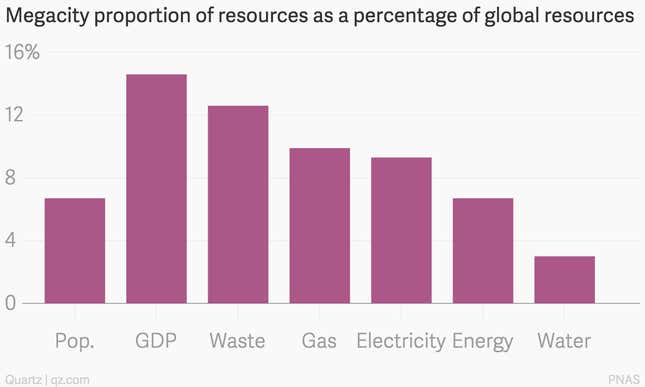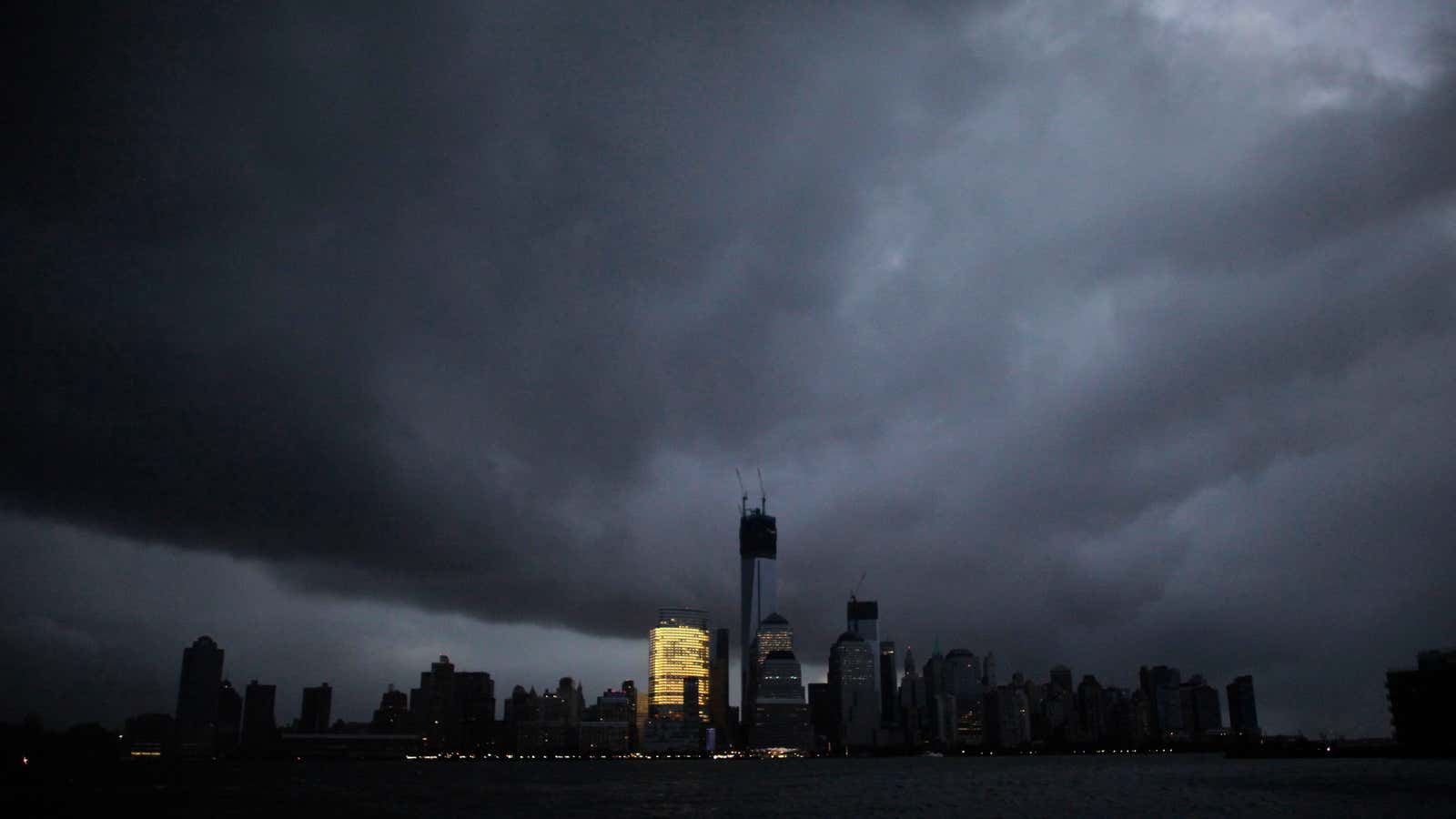Thanks to the mass migration to urban areas in recent years, there has been a corresponding boom in the number of so-called megacities—population centers with over 10 million people. In 1970 there were eight such cities. As of 2010 there were 27 of them, and there are expected to be 37 by 2020.
A new study led by University of Toronto researchers and published in the Proceedings of the National Academy of Sciences has quantified the energy, resource use, and waste production of these metropolises, based on data from 2010-11.
These megacities used a disproportionate amount of global resources: although they accounted for 6.7% of the world’s population, they consumed 9.3% of electricity and 9.9% of gasoline, and produced 12.6% of all solid waste. (They also used considerably less than their share of water because much of global water usage goes towards agriculture.)
This overconsumption is at least in part due to their economic centricity: These megacities also accounted for 14.6% of global GDP.

Although it had just the sixth-highest population of surveyed cities, New York City used the most energy and water, and produced the most waste:

Overall, there a number of factors that influence how cities use these resources. Poorer cities might not have widespread access to electricity and organized waste disposal; wealthier cities are more likely to have expensive but efficient utility systems, such as Seoul’s wastewater-treatment facilities.
